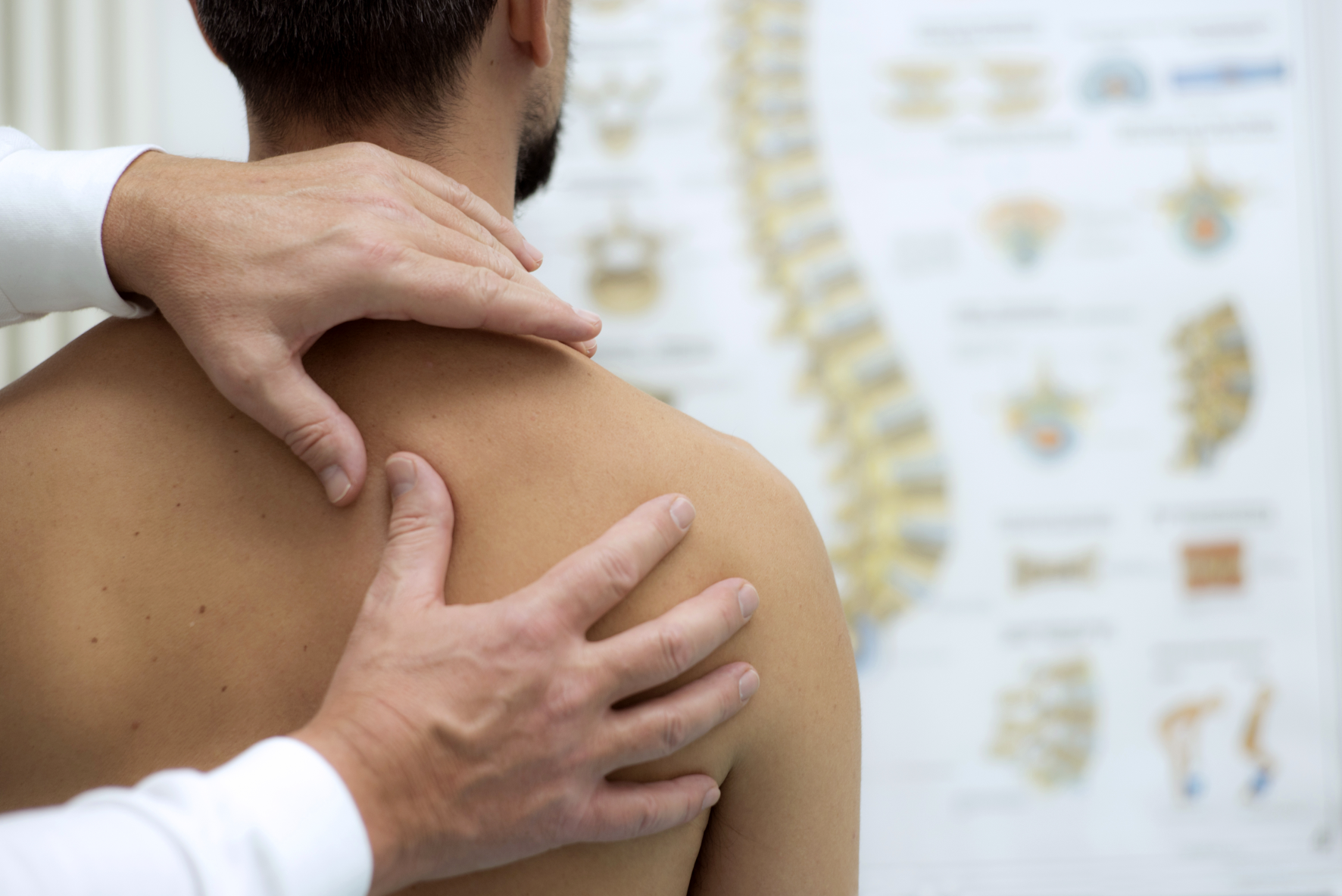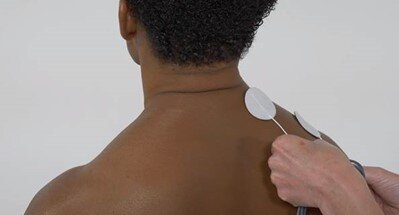Treating Frozen Shoulder & Range-of-Motion Shoulder Injuries
Practitioners who care for patients with musculoskeletal pain know that shoulder injuries can present significant range-of-motion treatment challenges. Specifically, frozen shoulder treatment often requires continuous physical therapy to “loosen” the joint.
And while this condition is considered to be fairly common – statistics show up to 20 percent of adults will suffer its affects – frozen shoulder mainly affects those over 40, as well as those with diabetes, thyroid issues and heart disease.
Healthcare providers unfamiliar with the RS-4i® Plus may be interested to learn how electrotherapy can aid in treatment for patients suffering from frozen shoulder, as well as other painful shoulder conditions.
A Closer Look at the Technology
Treating Shoulder Pain with the RS-4i Plus
The RS-4i Plus can be an effective at-home, pain-relieving therapy for patients with frozen shoulder and other shoulder injuries.
Common Causes of Shoulder Pain:
- Frozen shoulder
- Thoracic Outlet Syndrome
- Subscapular Pain
- Rotator Cuff Injury
- Frozen Shoulder (Protocol P)
- Thoracic Outlet Syndrome (Protocol M)
- Subscapular Pain (Protocol N)
Related Reading:
After a period of worsening symptoms, frozen shoulder tends to get better, although full recovery may take up to 3 years.
Shoulder conditions, such as frozen shoulder, are a primary reason that the RS-4i Plus includes Alternating NMES (neuromuscular electrical stimulation) as a treatment option.
By strategically placing electrode pads on muscles responsible for shoulder joint movements and then stimulating “alternate” sets of these pads, the RS-4i Plus can mimic movements used during everyday life, PT sessions and while exercising. For example:
A patient suffering from frozen shoulder can begin therapy utilizing two pairs of electrodes – where channel 1 is placed on the Semispinalis Cervicis and channel 2 on the Trapezius muscles. When stimulus is applied to these two channels, the shoulder will be raised and lowered during the stimulation/relax cycle.
Next, when the patient is ready, another pair of electrodes for channel 3 is placed on the Deltoid muscle. Applying stimulus to this channel, the shoulder will be pulled back and returned forward during the stimulation/relax cycle.
Note that when the patient is using all three channels for an Alternating NMES treatment, channels 1 and 2 are active while channel 3 is not, and vice versa. In the above example, the patient would experience the shoulder first being raised and lowered, next pulled back and returned forward. This cycle would repeat for the duration of the treatment.
Designed for Independent At-Home Use
Like all healthcare programs looking to provide quality care in this evolving era of telehealth and social distancing, the ability to include independently managed treatments is another key to on-going relief and/or recovery for many patients.
The RS-4i Plus is designed for at-home use, and all aspects of patient training can be managed remotely. Once the unit has been prescribed, it’s shipped to the patient at home. The patient then receives a personalized virtual instruction and training on the device, which enables them to follow the prescribed treatment plan independently.
By having treatments that patients can self-manage – whether that’s during the day or especially in the middle of the night – they can get the necessary treatment in their actual moments of need.
Easy-to-Access Online Training
The RS Medical Interactive Pad Placement Guide, which offers 6 protocols for treating shoulder conditions, is an easy way to review proper electrode placement. These brief, color-coded guides show exactly where to place pads – and which muscles are being targeted – so your patients get the most benefit from an electrotherapy session.
Take the Next Step
If you’re a healthcare provider interested in discovering how the RS-4i Plus may work for your patients with shoulder injuries, complete the form below and check the box to receive a virtual product demo. Then judge for yourself how the powerful NMES muscle stimulation can work for your patients.
The RS-4i Plus requires a prescription. Patients who are interested in discussing this high-powered, non-opioid treatment option with their healthcare provider can download a helpful guide to aid the decision. Get yours today.
Related Resources
Blog: 5 Reasons to Treat Sciatic Pain with the RS-4i Plus
Blog: Muscle Rehab & the RS-4i Plus
This blog provides general information and discussion about medicine, health and related subjects. The words and other content provided in this blog, and in any linked materials, are not intended and should not be construed as medical advice. If the reader or any other person has a medical concern, he or she should consult with an appropriately-licensed physician or other healthcare professional.


